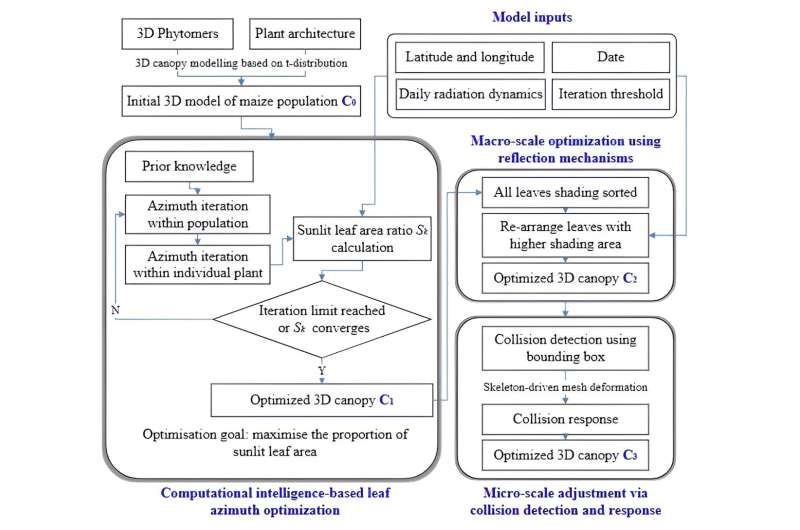This article has been reviewed according to Science X's editorial process and policies. Editors have highlighted the following attributes while ensuring the content's credibility:
fact-checked
trusted source
proofread
Harnessing computational intelligence for 3D modeling of maize canopies

Understanding the structure of crop canopies is essential for optimizing crop production as it significantly influences resource utilization efficiency, yield and stress resistance. While research has integrated canopy studies into various agricultural practices, the construction of accurate 3D models remains challenging due to complex spatial distributions and technological limitations.
Current methods struggle to capture detailed morphological data due to issues such as resolution and cost. To address these issues, there is an emerging interest in applying Computational Intelligence (CI) techniques. These techniques have shown promise in various agricultural applications but haven't yet been explored for constructing 3D models of maize canopies.
In March 2024, Plant Phenomics published a research article titled "Three-dimensional modelling of maize canopies based on computational intelligence." This research aims to integrate CI into 3D plant canopy modeling, particularly focusing on overcoming the challenges of internal occlusion and resource competition among densely planted crops.
The study presents a computational intelligence-based 3D modeling method for maize canopies, focusing on visualizing and validating the structure of maize canopies across different planting densities and varieties. Using this method, 3D models for the JNK728 and JK968 maize varieties were constructed at densities of 3, 6, and 9×104 plants per hectare.
The models demonstrated the method's ability to capture the effects of planting density on canopy structure, including increased shading and adjustments in leaf azimuth angles to optimize light capture. The models were validated and showed significant improvements in simulating the distribution of leaf azimuth angles, The R2 values indicated a high degree of consistency with measured data, especially after optimization through a reflective approach.
The study also validated the models' accuracy in representing canopy coverage, showing a correlation with actual canopy conditions and highlighting the models' limitations in capturing elements like fallen leaves and weeds. The distribution of leaf azimuth angles close to 90° increases with planting density, suggesting an adaptive response of maize leaves to environmental stress by aligning more perpendicular to the row direction. This trend was further validated through the construction of 3D models across a gradient of planting densities.
The computational process, though time-intensive, highlights the efficiency and potential of computational intelligence in 3D canopy modeling. The iterative optimization of sunlit leaf area ratios and the intelligent adjustment of 3D phytomers' azimuth angles reflect the application of swarm intelligence principles to crop canopy modeling.
The study highlights the significance of precise crop canopy modeling to comprehend plant competition for light resources. It suggests further enhancements and future work to improve the models' accuracy and practicality by considering a broader range of environmental factors and incorporating more detailed phenotypic and growth information.
More information: Yandong Wu et al, Three-Dimensional Modeling of Maize Canopies Based on Computational Intelligence, Plant Phenomics (2024). DOI: 10.34133/plantphenomics.0160
Provided by Chinese Academy of Sciences





















